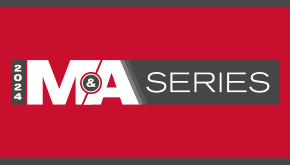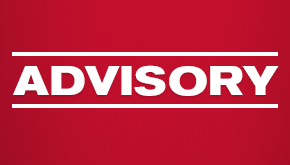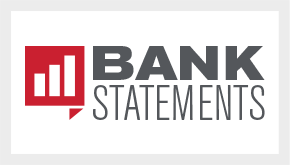Treasury Issues PPP Loan Forgiveness Application
On May 15, 2020, the Small Business Administration (SBA) and the Department of the Treasury (Treasury) issued the long-awaited Paycheck Protection Program (PPP) Loan Forgiveness Application along with instructions for applying for forgiveness. The announcement of the application indicates that the SBA will soon issue regulations and guidance to further assist borrowers and lenders in connection with the loan forgiveness aspect of the PPP. In the meantime, the application and instructions provide borrowers with additional information to help them maximize their opportunity for PPP loan forgiveness. The newly issued materials include guidance on the following important issues:
- how to calculate “payroll costs”;
- what non-payroll expenses are eligible for forgiveness;
- how to calculate a borrower’s number of “full-time equivalent employees”; and
- how to determine whether employees have earned at least 75% of their salary/wage rates during the “covered period” of the borrower’s PPP loan.
Calculating “Payroll Costs”
Measuring Period
When applying for PPP loan forgiveness, borrowers with a biweekly (or more frequent) payroll schedule may choose between two eight-week periods during which forgivable payroll costs can be quantified.
- Option 1: Use the “Covered Period,” which is the eight-week period commencing on the date the borrower’s PPP loan was disbursed; or
- Option 2: Use the “Alternative Payroll Covered Period,” which is the eight-week period commencing at the beginning of the borrower’s first full pay period following the PPP loan disbursement date.
The option using the Alternative Payroll Covered Period provides welcome relief to borrowers who maintain biweekly (or more frequent) payroll schedules. These borrowers were otherwise faced with the increased administrative burden of creating manual processes separate from their standard payroll systems or commissioning system changes to properly track forgivable payroll costs incurred during a pay period that straddled the borrower’s PPP loan disbursement date. Many borrowers can now choose to better align their payroll costs with their actual payroll periods. The SBA guidance also suggests that a borrower can compare payroll cost totals in the Covered Period versus the Alternative Payroll Covered Period to determine which measurement period is the most advantageous from a loan-forgiveness perspective.
Self-Insured Health Care Costs and Unemployment Taxes Are Payroll Costs
The new SBA guidance confirms that employer contributions to self-insured employer sponsored group health plans as well as state unemployment insurance taxes are payroll costs eligible for forgiveness.
Determining When Pay Is Included
The instructions clarify CARES Act language allowing PPP loan forgiveness of payroll costs that are “incurred and paid” during a Covered Period, indicating that payroll costs in the form of wages are incurred when such wages are earned and that they are paid when a payroll check is delivered to an employee or upon initiating an ACH transfer of wages into an employee’s bank account. Furthermore, forgiveness is available for wages earned, but not scheduled to be paid, during a Covered Period (or during an Alternative Payroll Covered Period) so long as those wages are paid by the borrower on or before the next regular payroll date. The SBA also reiterates that the total amount of cash compensation eligible for forgiveness cannot exceed the prorated annual value of $100,000 (i.e., more than $15,385 during the Covered Period or Alternative Payroll Covered Period).
Owner/Employee Pay
Also included in the instructions is the requirement that compensation paid to owners be identified separately from employee payroll costs. Interestingly, the certification included in the application notes that the borrower must certify that to the extent the borrower has owner-employees or is a self-employed individual/general partner, compensation claimed for forgiveness for those individuals does not exceed eight weeks’ worth of 2019 compensation, capped at $15,385 per individual. This certification requirement could limit the claim for forgiveness for other compensation paid to owner-employees in 2020, such as discretionary bonuses, if less or no compensation was paid to the owner-employee in 2019. This signals a caution to borrowers to carefully review any compensation paid to owner-employees that the borrower intends to claim forgiveness.
25% Limitation on Non-Payroll Costs Remains
Despite criticism of the SBA and Treasury’s limitation on eligible non-payroll costs representing no more than 25% of the loan forgiveness amount, which was not part of the CARES Act, this restriction remains as part of the forgiveness application. The application is clear, however, that borrowers spending more than 25% of the PPP loan proceeds for non-payroll costs will still be eligible for partial loan forgiveness.
Personal Property Leases Qualify as Forgivable “Covered Rent Obligations”
The application instructions also provide guidance for determining what lease-related costs qualify as forgivable “covered rent obligations” under the CARES Act. While noting that only 25% of the amount claimed for forgiveness can be for eligible non-payroll costs, the instructions introduce new guidance that a borrower can treat lease payments on leases for “personal property” as non-payroll costs eligible for forgiveness.
Previous guidance described lease payments for real property as non-payroll costs that would be eligible for forgiveness, but had not specifically addressed personal property. This guidance addresses an outstanding question for borrowers who were faced with continued lease payments for equipment, some of which may have sat dormant over the past few months, in addition to building rent. The SBA’s clarification indicates that borrowers can treat all required payments during a Covered Period made on personal property lease obligations that existed prior to Feb. 15, 2020, as eligible for loan forgiveness. As a result, borrowers should consider whether they have any computer equipment, copiers, auto or other personal property lease obligations for which they can claim forgiveness. Borrowers should take steps to ensure that they maintain a copy of current real and personal property lease agreements, receipts or canceled checks for costs paid or incurred during the Covered Period. Borrowers must also maintain other proof that the lease arrangements existed prior to Feb. 15, 2020. The application instructions note that these documents will be required to be submitted with a borrower’s PPP loan forgiveness application.
Calculation of Non-Payroll Costs
We note that the guidance does make a distinction in how non-payroll costs will be calculated in comparison to payroll costs. In the case of non-payroll costs, including real or personal property lease payments, there is no alternative coverage period. Forgivable expenses that are not payroll costs, including covered mortgage obligations, covered rent obligations and covered utility payments, “must be paid during the Covered Period or incurred during the Covered Period and paid on or before the next regular billing date, even if the billing date is after the Covered Period.” As previously noted, the Covered Period runs eight weeks (i.e., 56 days) from the date of a borrower’s loan disbursement. Following the new guidance, real or personal property leases that are paid by the borrower in arrears (on or before the next regular billing date following the Covered Period) may therefore still be eligible for forgiveness even though such payments occur outside of the Covered Period. For example, assuming that June copier lease payments are billed and due in July, a borrower whose Covered Period ends on June 30, 2020, would still be eligible to claim forgiveness for the June copier lease payment paid in July.
Average FTE Calculation
One of the greatest points of confusion for PPP borrowers to date has been with respect to the term “full-time equivalent employees” (FTE), which is critical to determining PPP loan forgiveness, but which is left undefined in the CARES Act. The SBA’s guidance provides two different methods for determining this key headcount measurement:
- Under the first, most precise manner of calculating average FTE numbers, a borrower should divide by 40 the average number of weekly employee hours during its Covered Period or Alternative Payroll Covered Period and round the quotient to the nearest tenth. However, the SBA emphasizes that “the maximum for each employee is capped at 1.0.”
- Under a separate, “simplified method,” the SBA advises that borrowers may simply count every employee who works 40 hours or more per week as “1.0 FTE” and count everyone who works fewer than 40 hours per week as a “0.5 FTE.”
With limited exception, for full forgiveness, borrowers must maintain, during their Covered Period or Alternative Payroll Covered Period, their average FTE count as established pre-PPP loan based on one of the following measuring periods:
- Feb. 15, 2019, to June 30, 2019;
- Jan. 1, 2020, to Feb. 29, 2020; or
- A consecutive 12-week period between May 1, 2019, and Sep. 15, 2019, in the case of seasonal employers.
Borrowers are reminded that if they reduced FTEs during a Covered Period or Alternative Payroll Covered Period that overlaps with the period between Feb. 15, 2020, and April 26, 2020, the borrower may restore its average FTE count by June 30, 2020, and still be eligible for full forgiveness.
The SBA’s guidance also recognizes several welcome and practical exceptions to the default rule that an FTE reduction during the Covered Period or Alternative Payroll Covered Period will erode a borrower’s forgiveness eligibility. Under this guidance, an FTE reduction arising from any of the following reasons will not reduce the borrower’s loan forgiveness eligibility:
- an employee’s rejection of a good faith written offer to rehire an employee during the Covered Period or the Alternative Payroll Covered Period;
- any employees who, during the Covered Period or the Alternative Payroll Covered Period, (a) were fired for cause, (b) voluntarily resigned, or (c) voluntarily requested and received a reduction of their hours.
Of course, maintaining supporting documentation will likely be very important to borrowers who seek to rely on these exceptions.
Salary and Hourly Wage Reduction
The calculation method for determining the impact of pay reductions is also addressed by the new guidance found in the instructions. If a borrower reduced the salary or hourly wages of employees during the Covered Period or the Alternative Payroll Covered Period, such reductions will need to be compared to salary and hourly wages paid during the period between Jan. 1, 2020, and March 31, 2020. If the wages of individual employees who earn less than $100,000 annually are reduced by more than 25%, then a borrower’s loan forgiveness amount may be reduced by an amount equal to the portion of those wage and salary reductions that exceed 25% of the impacted employees’ first-quarter wages and salaries. However, the SBA recognizes a “safe harbor” exception to this default rule for diminishing forgiveness eligibility based on wage/salary reduction. Under the safe harbor exception, borrowers may cure their excessive salary and wage reductions implemented during this Covered Period (or Alternative Payroll Covered Period) by restoring wage and salary rates by June 30, 2020. The SBA’s application instructions set forth the calculation that borrowers must complete to determine any loan forgiveness reduction based on a reduction of salaries or hourly wages.
For additional information, please see our prior analysis of the SBA’s frequently asked questions regarding PPP eligibility and payroll costs, application of the SBA’s affiliation rules to the PPP, the SBA’s initial PPP Interim Final Rule, the Treasury’s initial guidance on the PPP, SBA lending program provisions of the CARES Act, SBA clarification of various PPP eligibility issues in the Interim Final Rule and SBA guidance on PPP loans, "payroll costs." Armstrong Teasdale attorneys are actively monitoring and providing updates regarding the impact of COVID-19, including the PPP and other provisions of the CARES Act. Should the Treasury or the SBA provide additional guidance, we will be sure to update you.



































